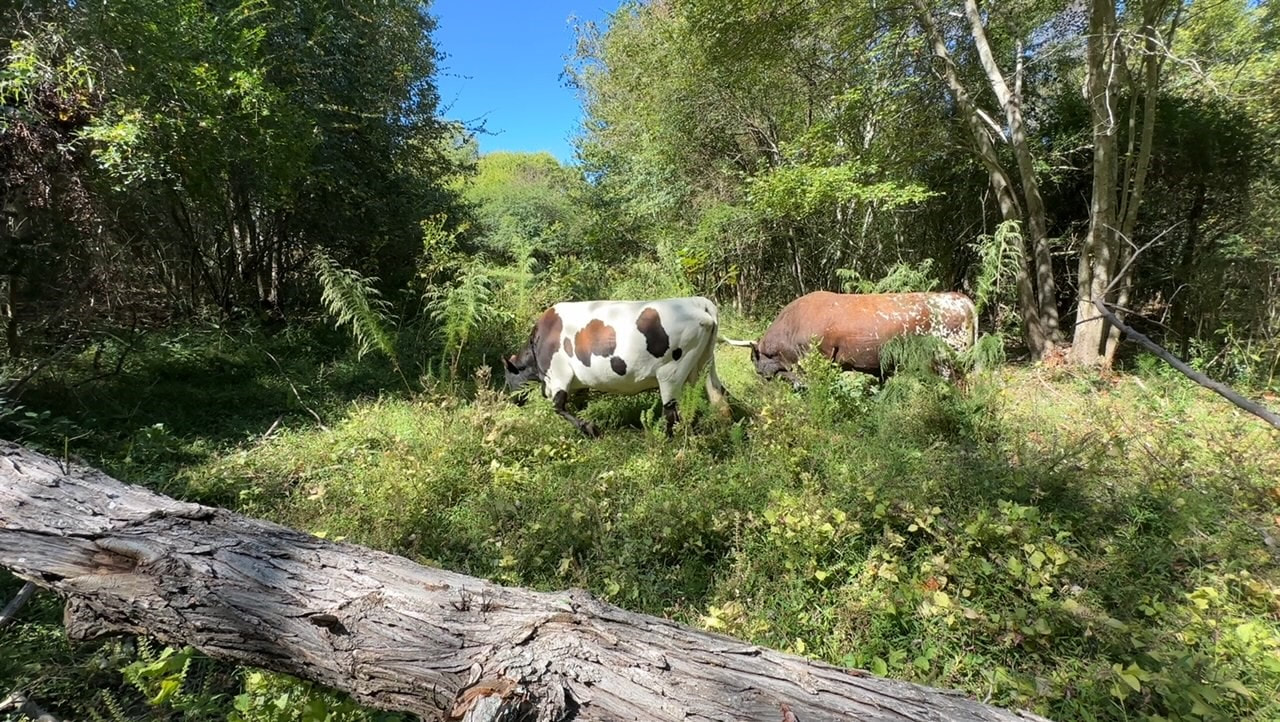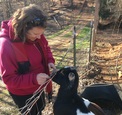How Ozark Akerz Farm Got Its Name
The journey to naming Ozark Akerz got one step closer in late 2006 with a mugshot and fingerprints at the Welwyn Garden City Constabulary. I was applying for a green card to the United States. Part of the requirement was checking for criminal records in every country I had lived in since the age of 16. This included 3 countries, Canada, Denmark and my residence at the time, United Kingdom.
My mugshot and fingerprints were sent to the RCMP (Royal Canadian Mounted Police), MI5 and MI6 (yes, James Bond’s MI6) and Interpol. Once they had been submitted, there was nothing to do but sit back and wait for criminal records to arrive in the mail, which took 9.5 months, the same as a Pineywoods Cattle gestation period. The US Embassy in London contacted me and said I had been cleared for the next stage: more paperwork and a medical exam followed an interview with Embassy staff. The day of interview at the US Embassy, my wife Sue and I were nervous. Let me explain why.
6 Comments
Forest Management with Pineywoods Cattle
Our Pineywoods Cattle have transformed impenetrable thorny land into a flourishing forest. We have witnessed the dramatic and positive impacts of this regenerative practice in 15 acres of forest that the Pineywoods graze. Through there appetite for invasive plant species we have seen an increase in biodiversity of plants and animals, discovered sacred indigenous sites and have begun honorably harvesting medicinal plants such as Turkey Tail (Trametes versicolor) mushrooms that have been scientifically shown to have anti-cancer properties.
Our video shows some of the new plant species and one of the sacred indigenous sites and compares the managed and unmanaged forest to illustrate the dramatic improvements the Pineywoods Cattle have made. We also share some exciting news about expansion of our regenerative practices to an additional 60+ acres of forest There Are Snakes Under The Floorboards! - Farm Life Begins
This year marks our 10th Anniversary at Ozark Akerz Regenerative Farm. Before Sue and I moved here, we spent 2 months fixing leaks, mending all manner of things and cleaning the farmhouse to make it livable. It had been abandoned for over 10 years. Little did we know what we had gotten ourselves into!
The following are excerpts from emails we sent to Sue’s mom, Lou, during the first couple months on the farm. It has been amazing to relive the beginning of our journey in detail, much of what we had forgotten. We both remembered the day we moved in as Feb 1, in fact it was Jan 27. All the joys and challenges came back to life when reading the emails. Lou suffered from dementia and would forget what we told her over the phone. Daily emails were a good way to stay close to her even though she was 2100 miles away. She kept the printed emails and photos we sent her in a binder. She would re-read the emails over time. She eventually filled 3 binders with our emails. |
Categories
All
Archives
April 2024
Check out our YouTube channel
Copyright © Turboxark Inc 2014-2024 - Terms of Use
|






 RSS Feed
RSS Feed